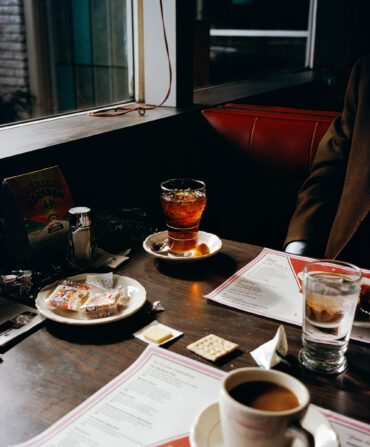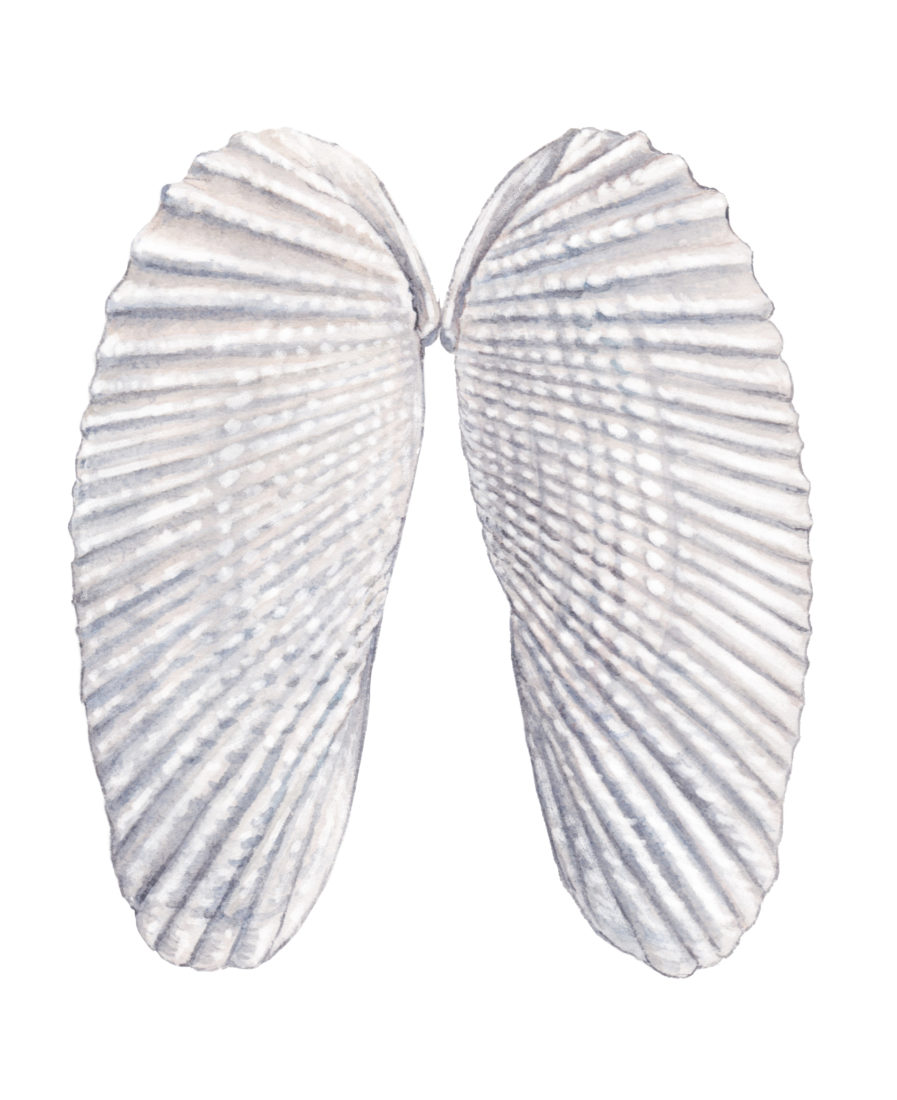
Angel Wing
Pure white shells house a meaty clam, but are often washed ashore as single wings. Anna Marlis Burgard calls them “steel magnolias of the sea” for their grace and strength.
Illustration: Jillian Ditner

Baby’s Ear
White or marbled pale yellow, blue, or slate-black, baby’s ear shells come in a range of colors and can be found from Maryland down the east coast, with spotted varieties often appearing in the Carolinas. “The snail, however, is an ungainly blob,” Burgard writes, “with looks akin to a jellyfish wearing a tiny shell beret.”
Illustration: Jillian Ditner
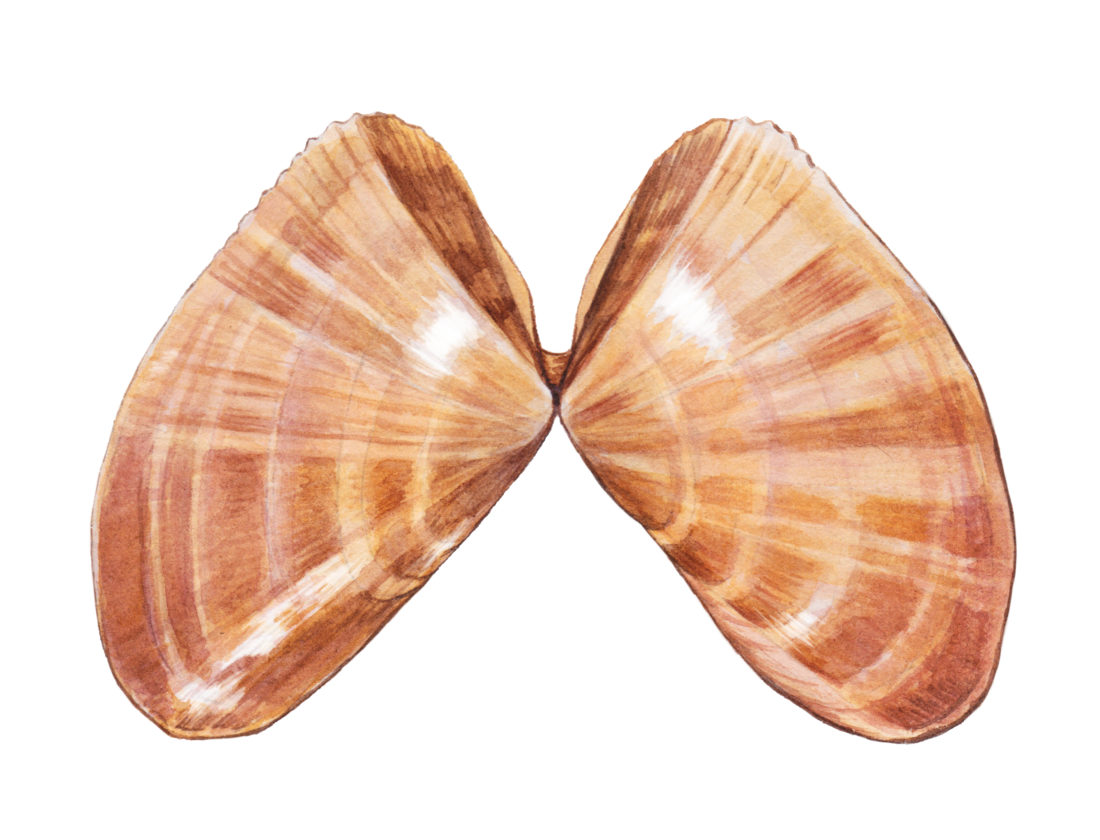
Coquina
These teeny animals create the little divots you see burrowing feverishly when a wave pulls back. Spread apart, the thumbnail-size butterflied shells come in a spectrum of pastel colors. The Spanish used layers of coquina to build St. Augustine, Florida’s fort Castillo de Marcos in 1695. “The material was able to absorb the impact of cannonballs without shattering,” Burgard writes.
Illustration: Jillian Ditner
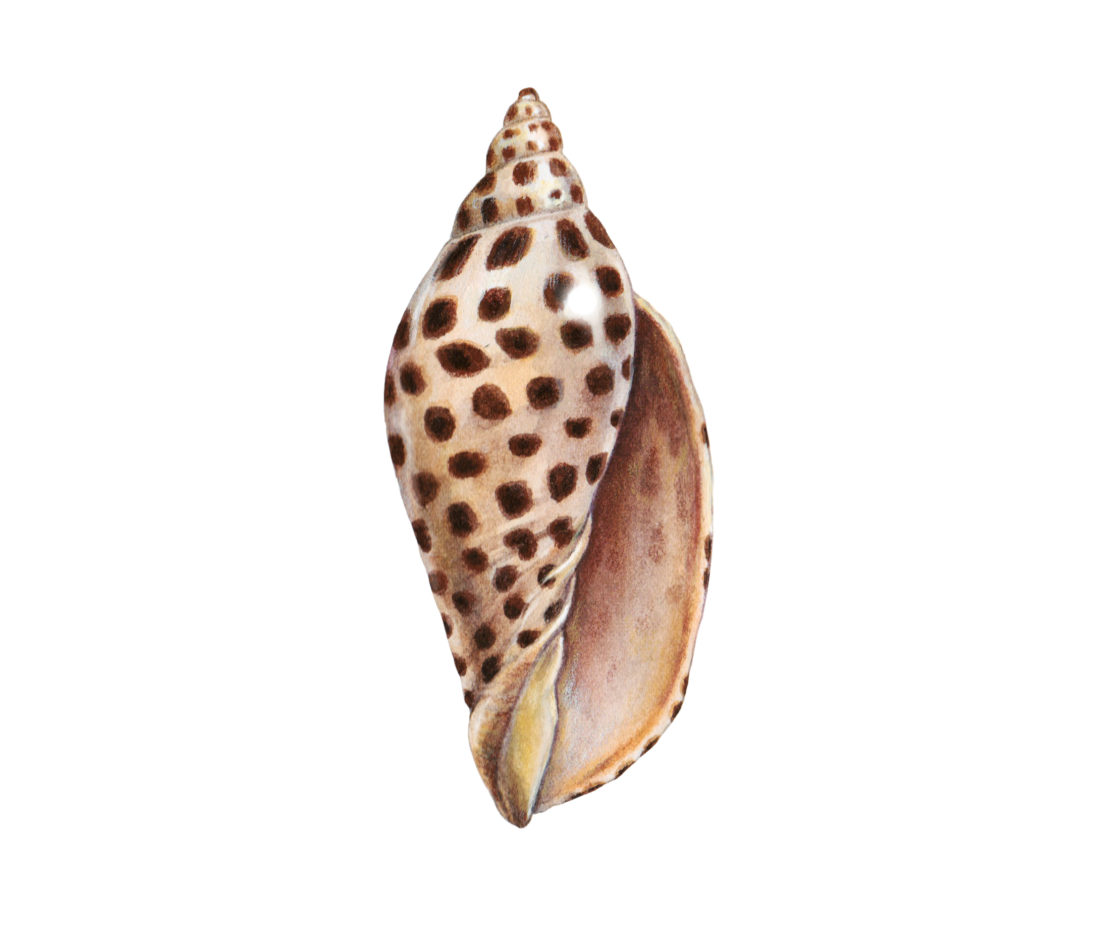
Junonia
Exceedingly rare and beautiful, the leopard-spotted shell on this mollusk is so exotic that some Florida newspapers feature its few-and-far-between finders. One variety, the Johnstone’s, is Alabama’s state shell, found only along the Gulf coast.
Illustration: Jillian Ditner
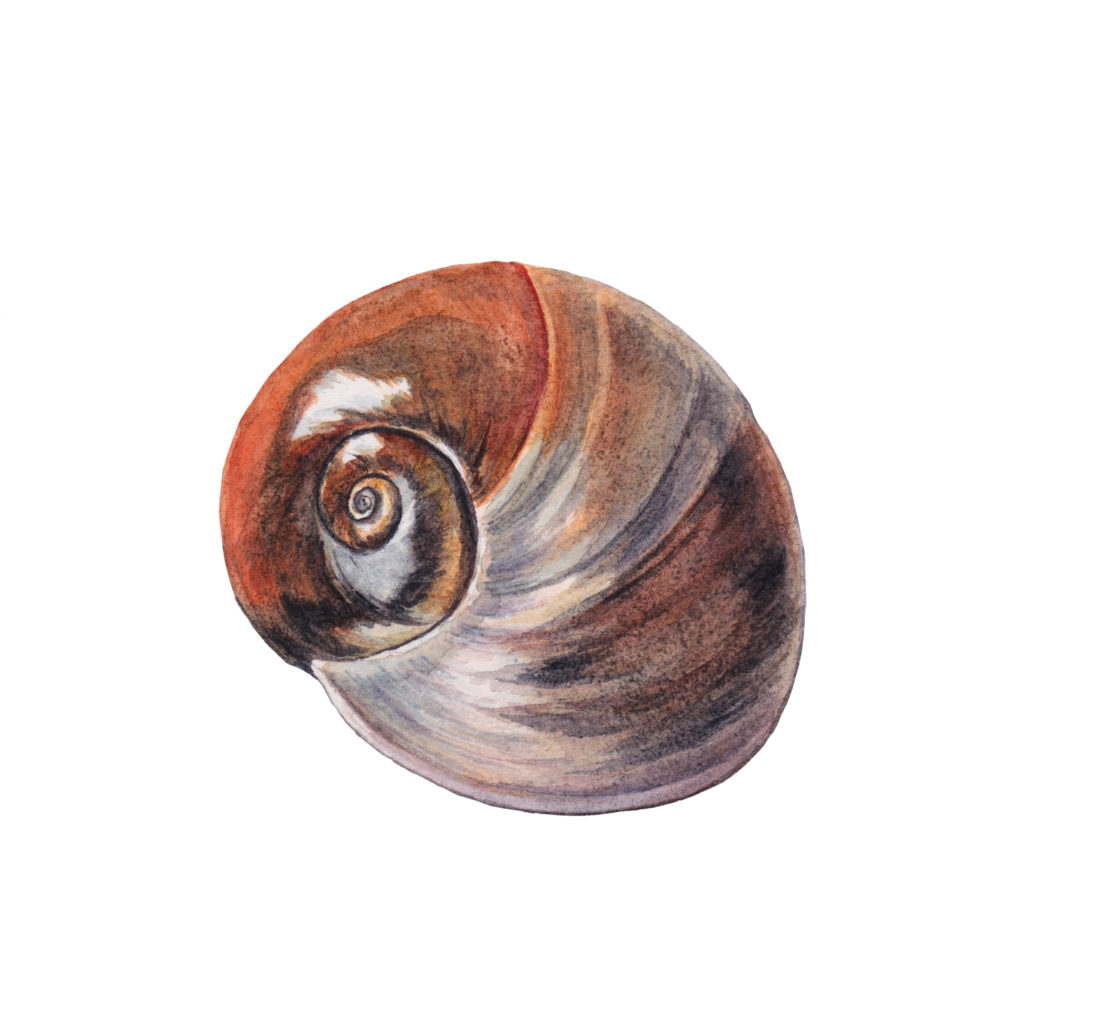
Moon Shell
A handsome housing for an oozy mollusk, the smooth moon shell can be banded in shades of gray, black, and brown. Some people call it a “shark’s eye,” and there are about 300 species.
Illustration: Jillian Ditner
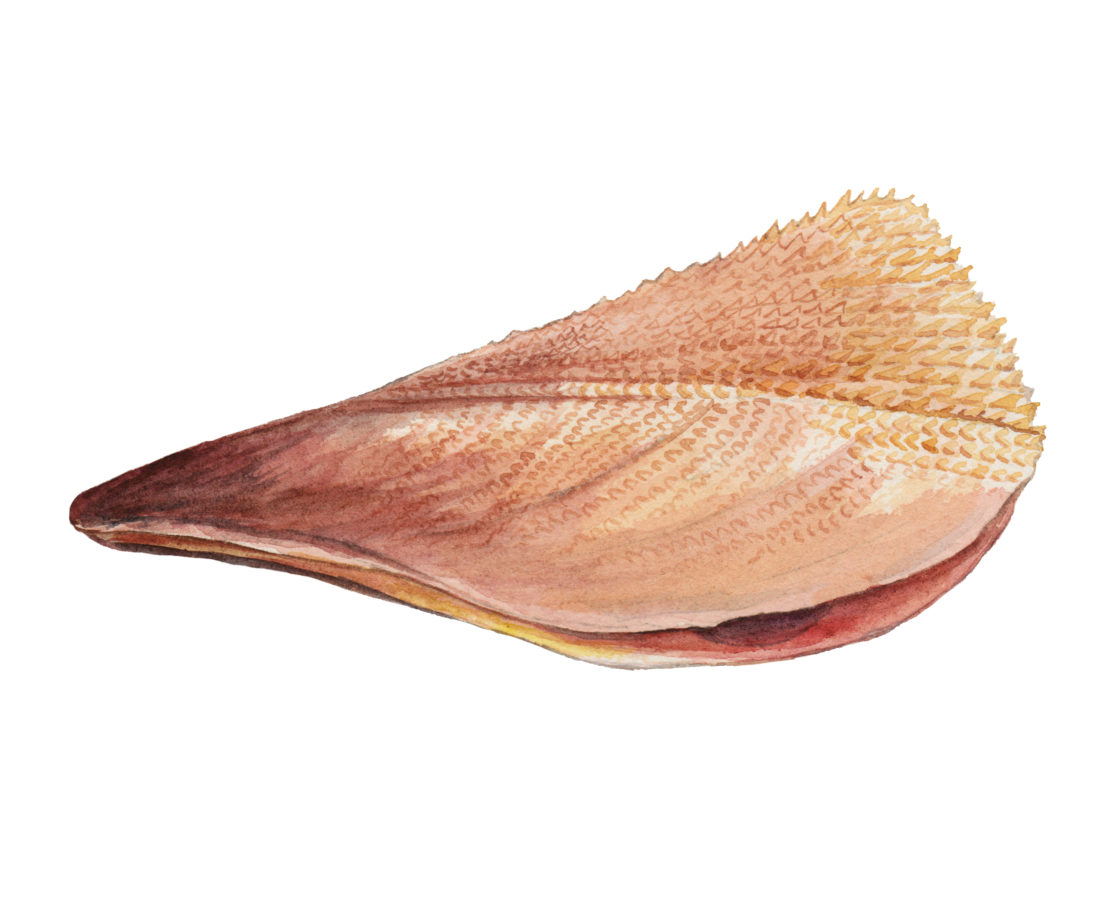
Pen Shell
Pen clams have a gland that produces fiber that can be woven into golden cloth, and a shell shape that inspires crafting. “On Sanibel Island, Florida, pens wash up in such quantities that people make elaborate sculptures with them,” Burgard writes. “They use the shells to outline clover and heart shapes that are yards wide.”
Illustration: Jillian Ditner
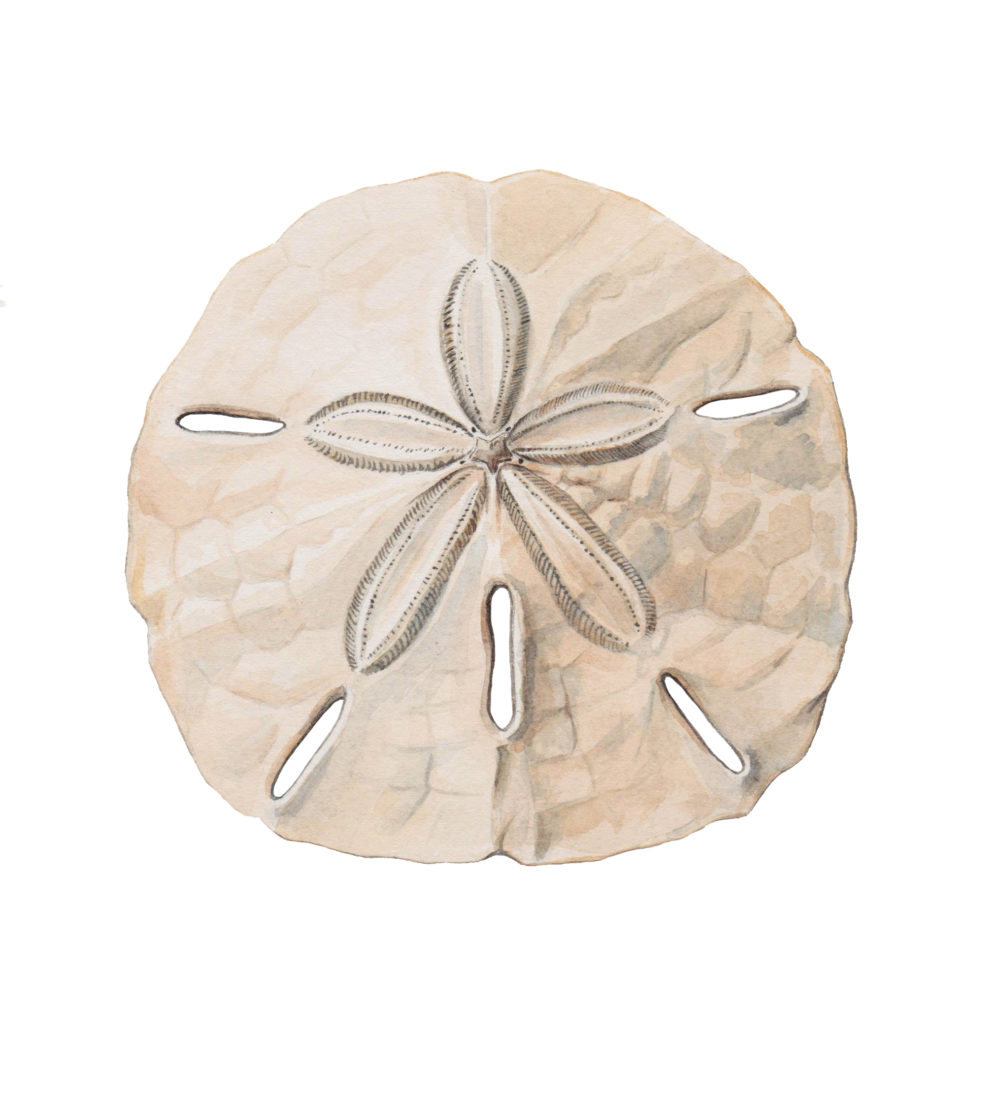
Sand Dollar
“On Georgia’s pristine Little St. Simon’s Island, I once found hundreds of purple keyhole sand dollars,” writes Burgard. Never take a colorful, living sand dollar, but do look for the delicate, bleached-white, round treasures.
Illustration: Jillian Ditner
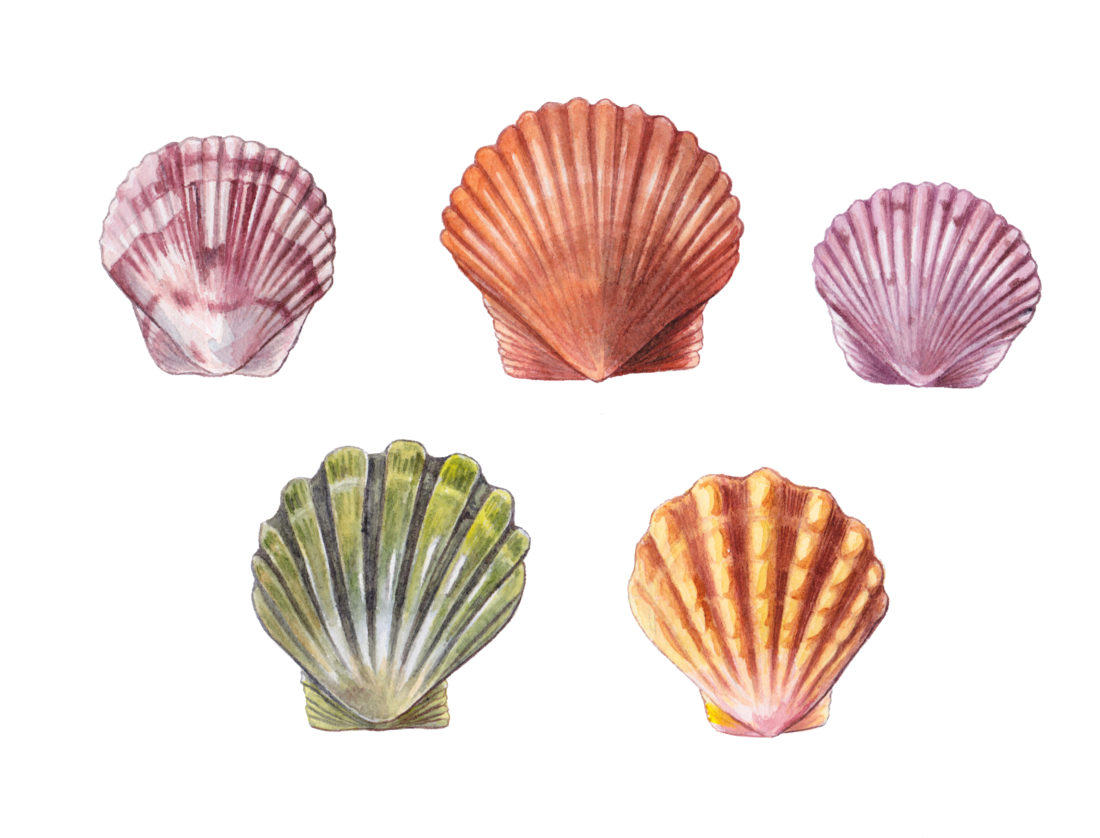
Scallop
There are almost 300 species of bay and sea scallops from the polar regions to the tropics, and they’ve long been considered a symbol of pilgrimage and travel. Tribes in the coastal South used their shells as plates, cups, hide scrapers, and fishing-net weights.
Illustration: Jillian Ditner
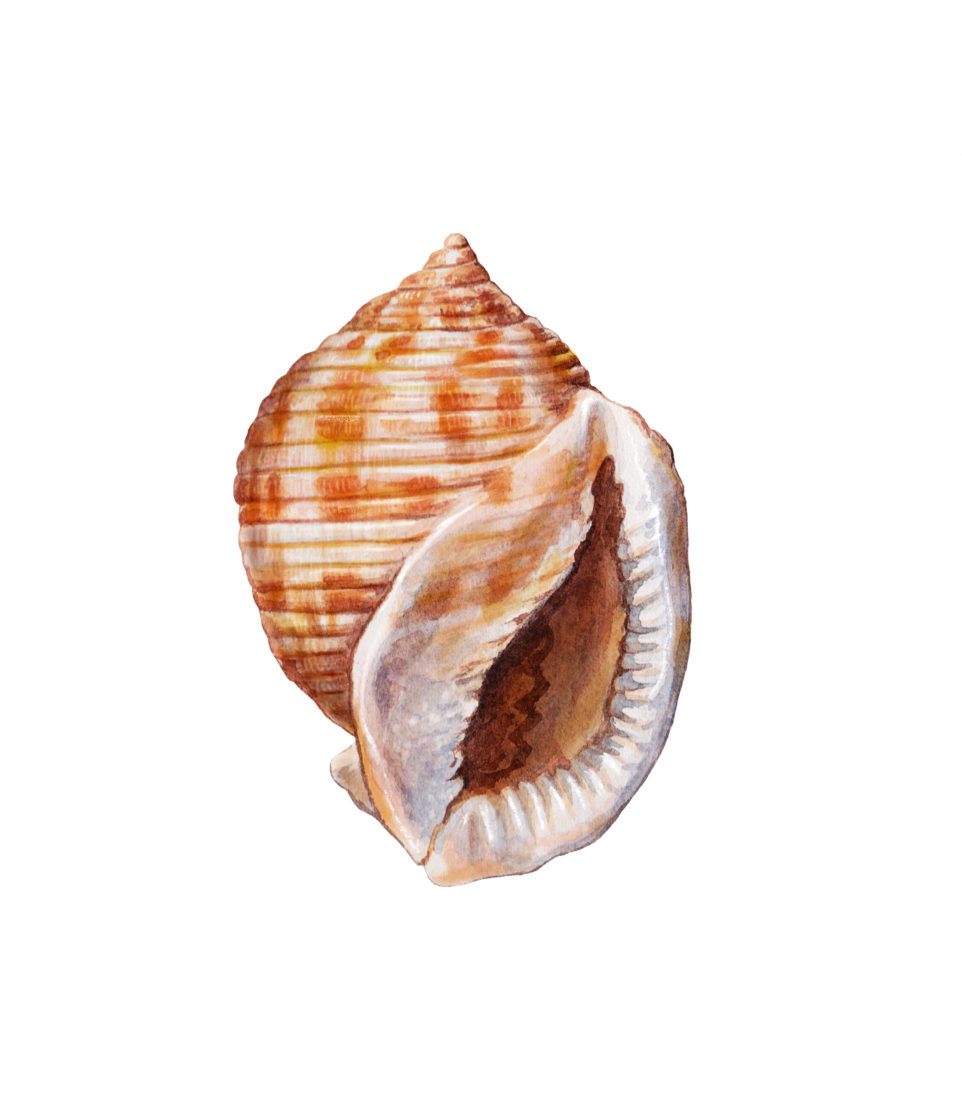
Scotch Bonnet
Among the wreckage of ships sunk off North Carolina’s Outer Banks lives the scotch bonnet snail. Its crisscrossing woven pattern resembles a tartan plaid, which gives the shell its name after the state’s Scottish settlers.
Illustration: Jillian Ditner
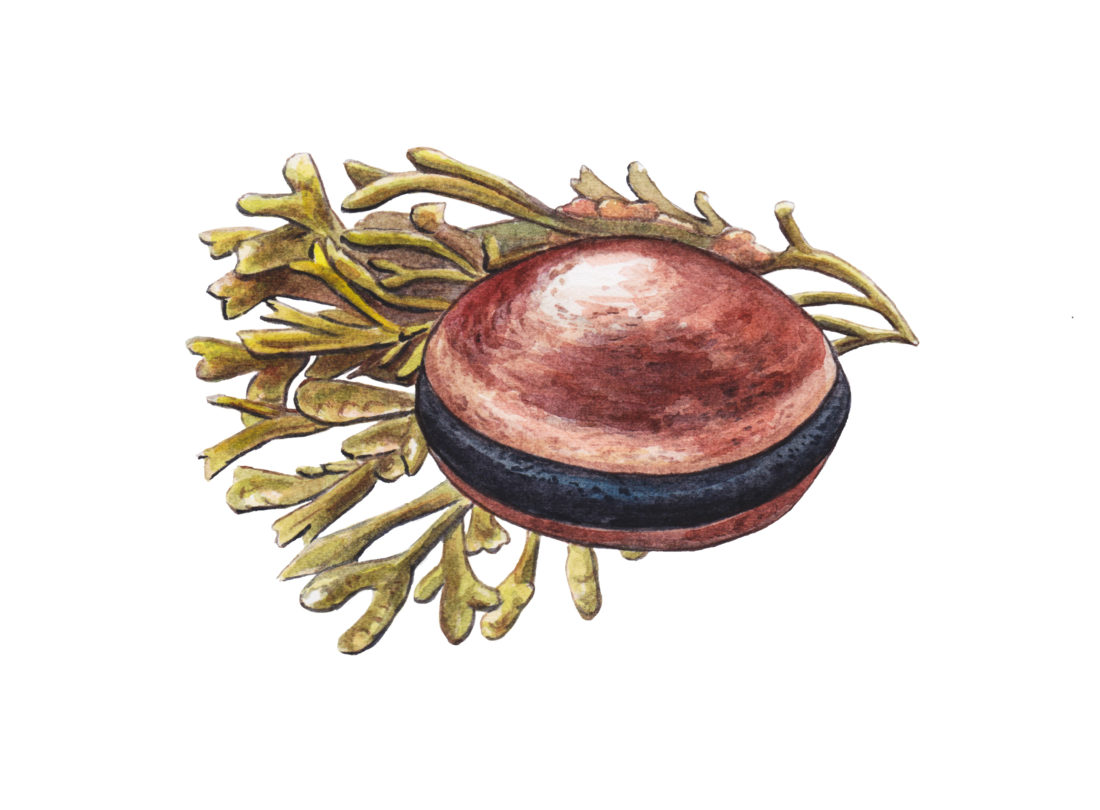
Sea Bean
Burgard first learned about sea beans when a marine biologist on South Padre Island in Texas pointed them out tangled in seaweed. Found throughout the world, the beached seeds from tropical plants are widely considered lucky.
Illustration: Jillian Ditner

Shark Teeth
“Sharks have multiple rows of teeth, losing hundreds daily (and using up to thirty thousand in their lifetimes),” Burgard writes. “It’s basic math: there are lots of their teeth to be found.” The black and grey ones plentiful on Southern beaches are really fossils—over thousands of years, minerals in ocean sediment replace the enamel.
Illustration: Jillian Ditner
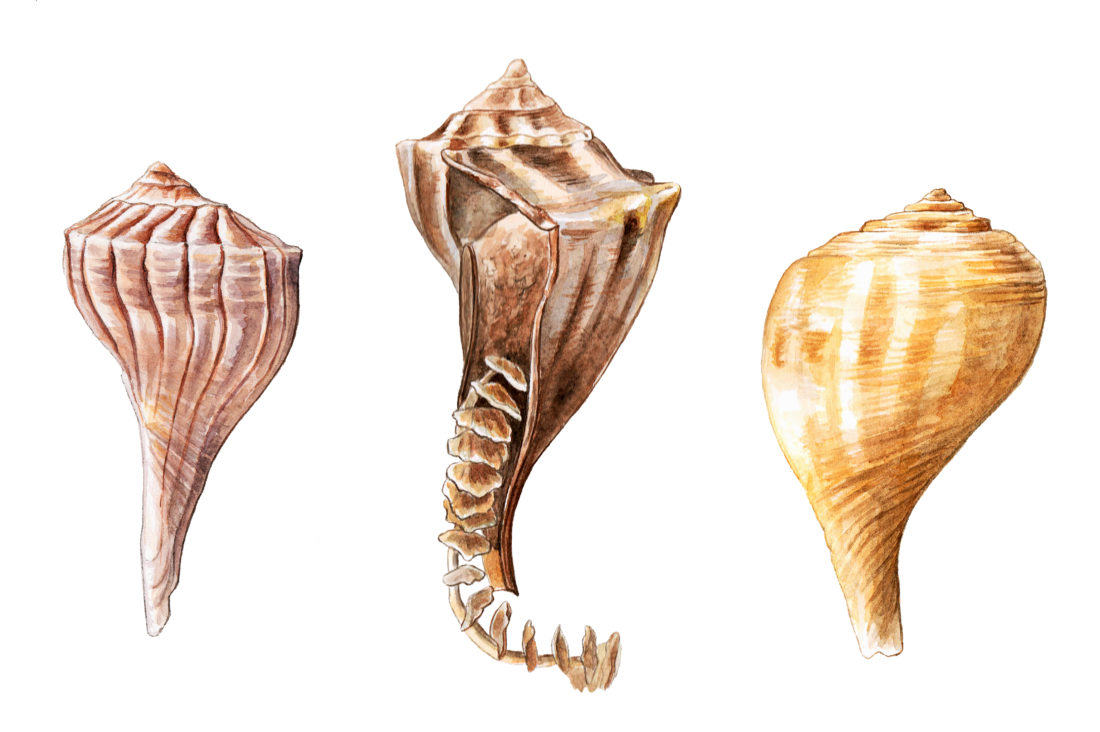
Whelk
Winding whelk shells are sometimes seen wrapped with a string of egg casings. “If you find these ‘mermaid’s necklaces’ on the beach and the capsules are dried out and sound like a rattle, the juveniles didn’t make it,” Burgard writes. “But if the cases are still squishy, they might have a chance, so do nature a favor and toss them back over the surf line.”
Illustration: Jillian Ditner
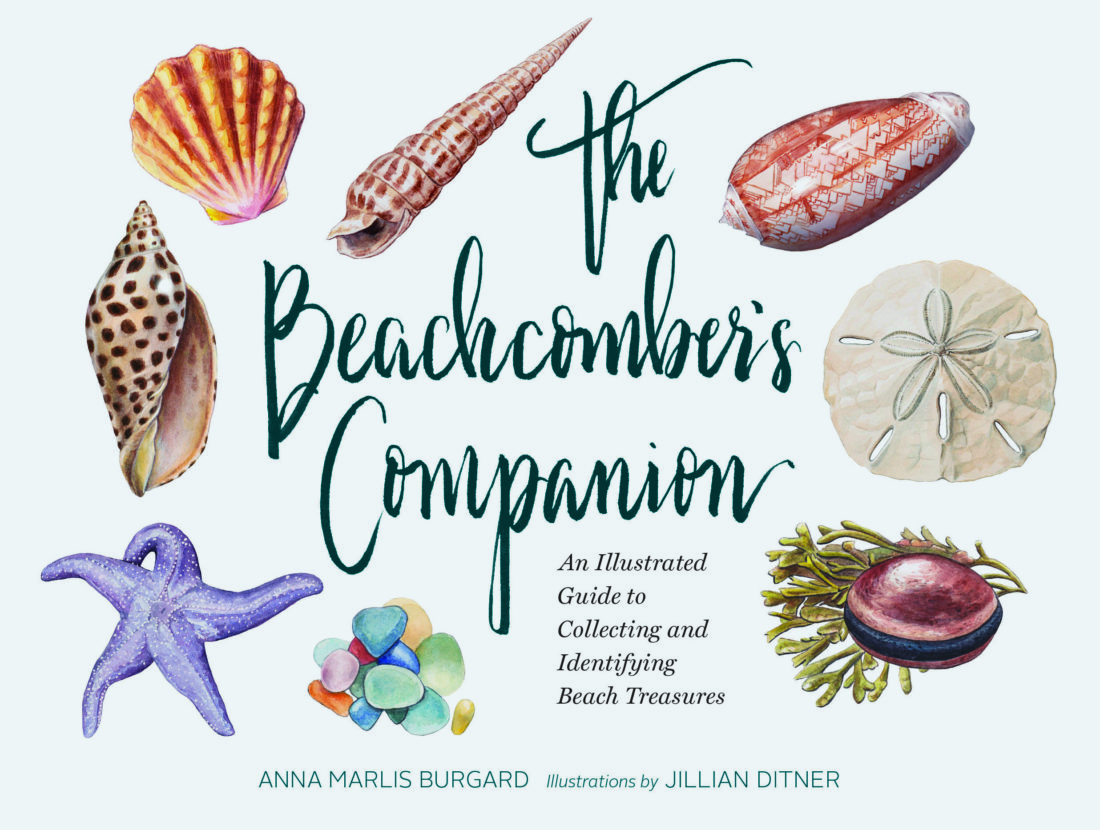
The Beachcomber’s Companion by Anna Marlis Burgard, illustrated by Jillian Ditner (Chronicle Books, 2018)




